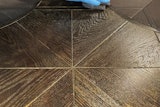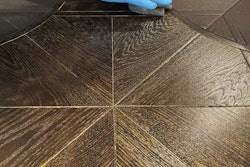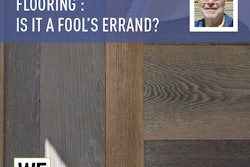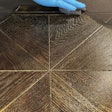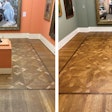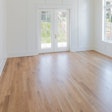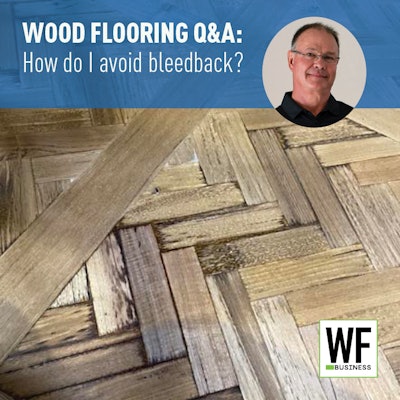
I’ve had bleedback on a couple stain jobs recently. How do I avoid it?
Daniel Boone, sand and finish training manager at Sparta, N.C.-based American Sanders, answers:
Back when Mickey Moore taught the NOFMA School, he used to hold up a bunch of straws held together by rubber bands to explain wood’s cell structure to the class. When those straws are full of stain, many things can cause bleedback, which is when stain keeps coming up out of the wood even after it’s been wiped off the wood floor and the floor is completely dry.
Flooding a floor with stain and letting it sit on the floor too long without spreading it are both big factors in bleedback. I’ve seen bleedback happen when people pour stain directly onto the floor and then buff it down into the floor—they force the stain down into the floor. When buffing, the best practice is to put the stain onto the pad you’re using to buff the stain in, not directly onto the floor. When people are ragging stain on and off, they can create bleedback by leaning their weight onto their hands holding the stain-filled rags. You can then get spots of bleedback the size of your palms all over the floor where you pressed the stain down into the floor as you leaned on your hands.
Changes in temperature and relative humidity can play a part in bleedback. Just like the mercury in a thermometer rises when the temperature goes up, stain in the wood can get pushed to the surface when the temperature rises or when the RH increases. Hot spots from the sun on the floor are potential problem areas even after the first coat has been applied.
Not paying close enough attention to your wiping-off process can leave stain on the floor, which can create bleedback. I always say that we get paid by the square foot but we work by the square inch. Having a system to pay careful attention to how you’re wiping the stain off every single inch of that floor plays a big role in minimizing bleedback. Finally, always follow the manufacturer’s recommendations and use good common sense!
See more examples of bleedback:


 Many factors can contribute to bleedback—when stain keeps seeping back up to the surface of a wood floor. In this case, too much stain was applied and pooled below the herringbone slats.Courtesy of Troy Stanfield
Many factors can contribute to bleedback—when stain keeps seeping back up to the surface of a wood floor. In this case, too much stain was applied and pooled below the herringbone slats.Courtesy of Troy Stanfield










